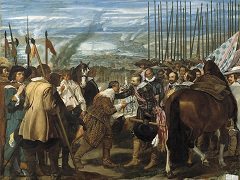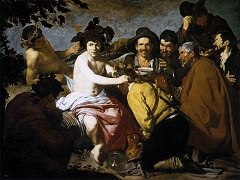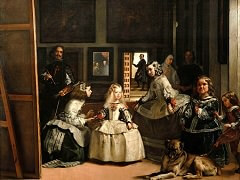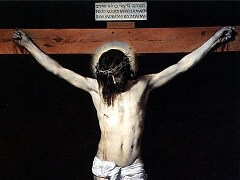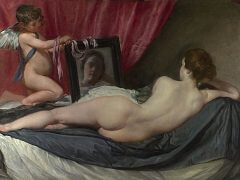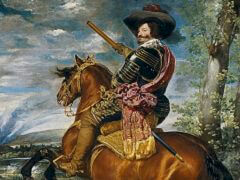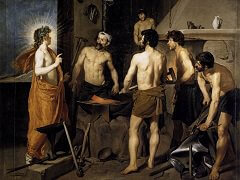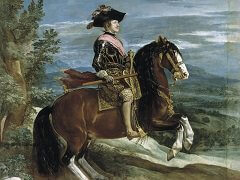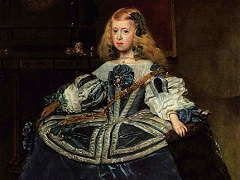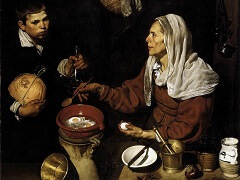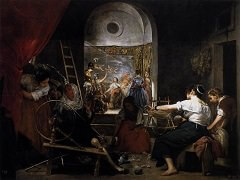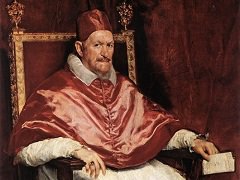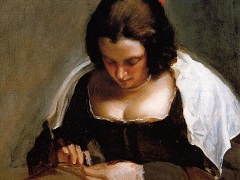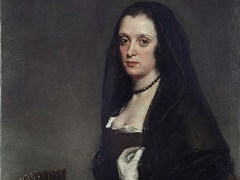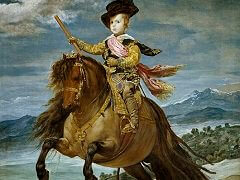Juan de Pareja, 1650 by Diego Velázquez
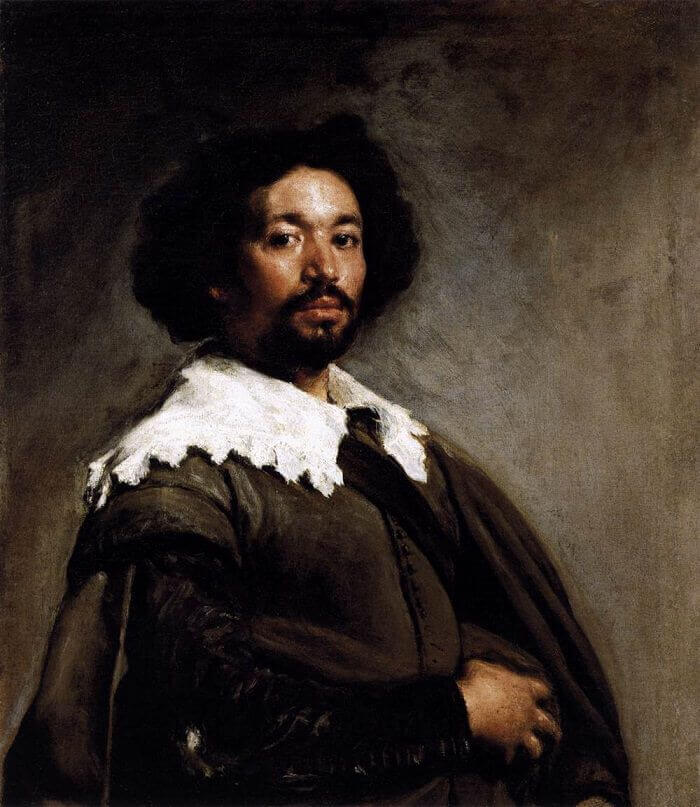
Exceptional powers of observation and an unprecedentedly vibrant technique make Velázquez the greatest Spanish painter of his century. As court painter to King Philip IV of Spain, Velázquez was sent in 1649 to Rome, then the centre of the international art world. He wished to pay another visit to a country that was so rich in art, and he had also been commissioned to buy pictures and casts of classical statues in Rome for Philip IV's collections. He met the most famous Italian artists of the time in the capital, and tried unsuccessfully to entice some of them to Madrid. He also showed his own skill in many portraits painted while he was in Rome. He made here two of his greatest portraits, one of Pope Innocent X and another, of his studio assistant Juan de Pareja, a Sevillian of Moorish descent.
In the portrait of Juan de Pareja, a wide white collar with a jagged border contrasts effectively with the black of the model's hair and beard and his copper-coloured complexion. The dark eyes glow with great expressive force.
According to an eye-witness, this half-length portrait of Pareja was displayed in the Pantheon in Rome during the celebrations of the Feast of St Joseph on 19 March 1650, and met with unreserved admiration from artists of many different nationalities. one connoisseur remarked that while all the rest was art, this alone was truth. It won admission to the Roman Academy for the Spanish court painter, serving Velázquez as a kind of entree, and he could expect its success to bring him commissions to paint some very distinguished people. Sure enough, the Pope himself was soon sitting for him, and so were members of the papal household.

